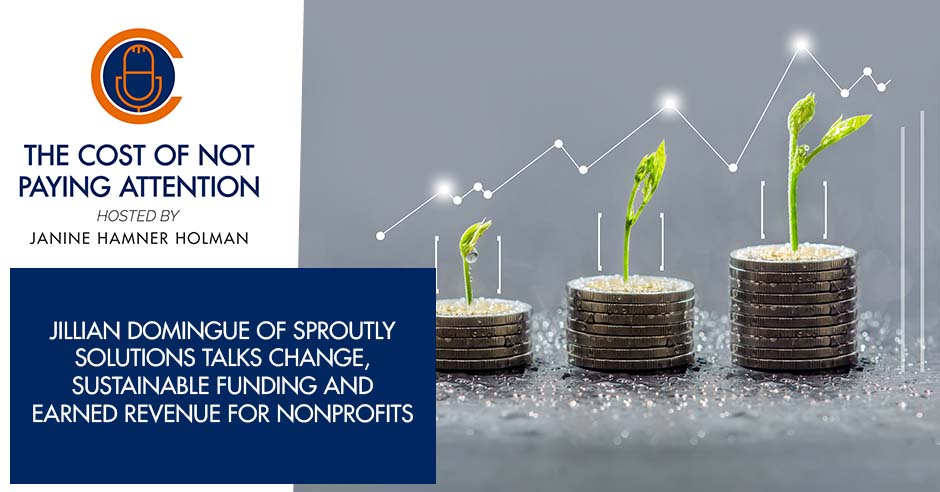
Getting sustainable funding for a nonprofit organization can get difficult. An earned revenue model helps keep organizations funded while providing solutions for others. We dive into nonprofits and funding as Janine Hamner Holman interviews Jillian Domingue of Sproutly Solutions. Jillian’s goal is to help philanthropic groups make a greater impact, and she does this by exploring earned revenue. Listen in as Jillian discusses how this helps organizations maintain funding while helping. She also takes a look at change management and helping others through change. If you run a charitable group or support one, then this is the episode for you.
GUEST: Jillian Domingue | LinkedIn| Buy her book: Purpose With Profits
HOST: Janine Hamner Holman | [email protected] | LinkedIn, Facebook, and Twitter | Subscribe to my Newsletter! | Book me to Speak!
—
Listen to the podcast here:
Jillian Domingue Of Sproutly Solutions Talks Change, Sustainable Funding And Earned Revenue For Nonprofits
What am I paying attention to? The opportunity of purpose. I spent years of my professional life working for nonprofit organizations. First, as a Fundraiser and then Development Director, which in the world of nonprofits are the people who direct the fundraisers, and then as a Chief Operating Officer.
One of the things that I find fascinating in the world of work is social change nonprofits, which is the kinds of for which nonprofit that I was working, is that they are especially purpose-driven. What most people are looking for at work is a feeling of purpose, belonging, being known, seen and connected to something bigger than ourselves.
Whatever we are up to, let’s get conscious and purposeful in talking about why in the world it is that we are doing the things that we are doing. I do this show as part of my organization, the J&J Consulting Group. We are up to is having the world of work be one in which everyone can thrive.
I heard a hospital CEO talking about the difference between having somebody cleaning the floors and having the mindset of, “I’m cleaning the floors.” Versus the mindset of, “I am making our floors shine to help my patients heal faster.” Who is going to be more engaged in their work? Who is going to love what they do? Who is going to have that sense of pride in a job well done? How is that then going to affect everything else that happens in the organization?
This brings me right to my guest. I am so thrilled to introduce you to Jillian Domingue. She is a problem-solver and entrepreneur with years of business development experience amplifying the impact of mission-focused nonprofits. She launched Purpose with Profit: Unlock Earned Revenue to Fuel Your Impact. This book is a must-have guide and is available on Amazon.
It is especially for nonprofits but any organization that is interested in exploring the power and possibility of earned revenue as a sustainable funding method to support their mission and impact can benefit. She has founded four different organizations. She has biked from Austin, Texas, to Anchorage, Alaska. She became a single foster mom at the age of 26 and she is building a chatbot that is all about a mind, body spirit, helping to mentor and support adolescents struggling to find meaning and connection. And, just saying all that makes me both tired and question how I’ve been spending my time!
—
Welcome to the show, Jillian.
It’s great to be here. Thank you so much for having me.
I’m going to begin with the way that I usually begin, which is what is something that you have become aware of that either you or others were not paying attention to either consciously or unconsciously, and then what has been the cost of that inattention?
There is a world in which you can take the best of both the for-profit and nonprofit worlds, and mirror them to make the highest impact. Share on XIn line with the book I wrote, it comes down to the traditional ways that nonprofits generate income. We have huge nonprofit hospitals, for instance. There are a lot of nonprofits that are using earned revenue, but when I entered the nonprofit space, I was in my college dorm room. For the first five years of building that nonprofit, all that was ever brought to my attention was grants, donations, hosting your next event, and for those that have lived in that world, that it’s so tiring. You never know where your next donation is going to come from. It is highly unpredictable. It was not until later on in that experience that I was even introduced to the concept of earned revenue. All that you can do and improve by bringing traditional what I have seen as for-profit tools, tactics, the way you even organize your meetings, set your objectives and bringing those tools to further our missions on the nonprofit side.
At that time, I was developing CareBOX Program and I was living with people who were also launching for-profit companies. I was watching their experience in their wins and setbacks. I learned so much in that process that I became aware of throughout the years how much more positive and good we can do if we mirror the two, nonprofit and for-profit. As I have been in this space for a while, you come across people that will say, “You get the worst of both worlds.” I’m fortunate to experience a world in which you can take the best of both worlds and mirror them to make the highest impact.
For anybody reading who is thinking, “I don’t have a nonprofit,” it may be that you are on the board of a nonprofit. It may be that you have been thinking about something that makes your heart sing that you would love to do.. and part of how people make those things happen is they create nonprofit organizations to do them. It may be that you are involved in a community organization or have been feeling a calling to do that and have not taken that step yet. We are going to be talking about nonprofits and how they work and both for-profit and non-profit organizations can learn from each other to be more sustainable for the long run.
They are probably going to be tricks and tips that Jillian is able to reveal to us, even as business owners or leaders in organizations in for-profit companies, that we may not have been doing so great. So, buckle your seatbelt! I predict that there is going to be something here for everybody to learn.
Back in the day when I was raising money for organizations, I never wanted to work for a hospital or an educational institution or a big institutionalized organization. Every organization I worked for had a budget of less than $5 million and sometimes a lot less…and those were the ones that moved my heart. How this meeting went with somebody asking someone for a donation could determine how well we are going to make payroll in two weeks. That is a lot of pressure for people to be managing. It’s part of why I eventually left the nonprofit world.
As you started thinking about other strategies and strategies from the for-profit business world that apply to the nonprofit business world, take us through that.
My first experience was a failure, but I learned something from it.
We often learn the most when things go wrong.
We learned about earned revenue. We were determined to implement it. Our mission was and is delivering free care supplies to cancer patients to help prevent malnutrition, infections and injuries from falls. One of the ways we went about doing that was to test using an Amazon registry at first to post a profile of needs and see if there were people interested in supporting. It went extremely well. Usually needs were granted in 24 hours!
We launched a crowdfunding website; it was a crowdfunding meets gift registry. We posted different patients’ profiles that they had shared with us and their list of supplies they needed and invited people to come in and have almost a shopping experience to provide these supplies to patients in need. There were a lot of wins with any company you are trying to launch. Marketing and sales are a constant struggle. We were right there when Facebook algorithms were awesome and it was granted overnight. We cheered. But, overnight it was gone.
We played the influencer game a little. We connected with a few people through our network, which was amazing. We would have certain people share and through their network, we were able to generate a good amount. One of the hard pieces was trying to convince our donor fundraisers, grants and donations at that time, because a lot of those funds were “restrictive,” which means there were many restrictions on how we could spend the money. We needed funding to invest in the marketing and sales side. I could see the full picture. It works. We have a lot of positive impacts that are going where our money’s being spent.
As we all know, you cannot have an amazing engine if nothing is going to it. That was about 6 or 7 years into building CareBOX Program. That was one of the biggest pieces of change for me of realizing earned revenue can be hugely impactful. In my next job, I called myself an entrepreneur because I went into a larger organization and launched a company or a division. That was full-focused earned revenue because of what I have seen before. The restricted nature of traditional philanthropy.
My position is, when I think purpose with profit, I think earned revenue. I picture that and it can live within a nonprofit structure or a for-profit structure. I have even seen where sometimes you can mirror the two side-by-side in the for-profit structure, allowing you more access to unrestricted capital that will potentially take that purpose-driven mission even further. I have written Purpose with Profit to where anyone that wants to try and figure out a way to build a business model using things like metrics, sales, and all the things that it does take to build a sustainable business model.
When it comes to creating earned revenue within a nonprofit, it has to be mission-focused. Share on XPutting your impact and purpose right front and center of all of the decisions you are making. I know how hard that is going to be, which is very hard! If you have $50,000 to spend, do I give $50,000 for free counseling to survivors of sexual abuse, or do I put that $50,000 into a business model where the big goal is that in 1 year or 2, you would have $500,000 to put towards those services? In a nonprofit, if we live in feast or famine, it is so hard to think of the long-term vision and work towards that.
I’m years into having my business and there are times of feast and famine here. Thinking strategically about exactly that question, how do I spend my time? How do I spend our resources? Time, money and energy are all our resources. What is the most effective use of that time? Is it serving clients? Is it furthering the mission of the organization? Is it making an investment in the business?
Those are hard decisions, no matter what businesses you are running. Walk us through a little bit if somebody is out there and thinking, “This sounds pretty interesting either for my business or nonprofit.” In addition to buying your book, how would I go about starting to think about creating those earned revenue sources?
This works if you were at the beginning stages in a space where you have a strong mission behind you. Let’s say you want to help support and find adoptive owners for dogs and cats. That is your core mission. Before anything else, I would look at you, your team, and the board and see the tolerance for risk because you are stepping into the unknown more than the unknowns that you previously did not know. Secondly, creating earned revenue within a nonprofit has to be mission-focused. What is an expertise that you carry that would provide value to another group or an audience that is mission-aligned?
In that scenario, let’s say you have built a shelter. Would you be able to go and help train, using your methodology that has been X, Y and Z sustainable, other communities on how to build a shelter model like that? You get down the line and you are thinking, “Do I want that to be a training book, or website, or whatever it might be?” That’s a crucial mission component because earned revenue, at least in the way that I look at it, it’s not meant to be like, “Let me look around my house and see what I can sell.” It does have to be a good fit with something in line with your mission. You know that when you are generating the income, it is furthering your impact and not just focused on revenue.
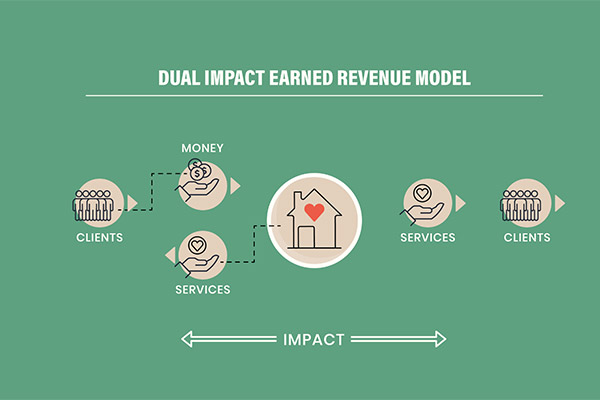
Sustainable Funding: Look at your team and your board, and just see what the tolerance is for risk, because you are stepping into the unknown more than the unknowns that you previously didn’t know.
I want to get present for me, you and our readers what that pressure is like for the people in nonprofit organizations whose job is to raise money. We are thinking about earned revenue and what people often call “making money while we sleep.” A book is a source of earned revenue, making money while you sleep. You can be taking a nap and people can be out there buying your book. You are not trading your brain and doing that work for revenue. I don’t know if I have the words to express the pressure and stress of the day in and day out, year in and year out, of being accountable for other people’s livelihood through fundraising.
If we are business owners, we are accountable for other people’s livelihood, but there is not a direct connection between what I do today and every other day, meaning whether or not we are going to be able to pay our bills and people or keep our lights on. If I’m a business owner, maybe a tenth of my time – or even seven tenths of my time – I’m pitching companies, organizations and buyers to purchase whatever it is that I’m selling. When you are a fundraiser for an organization, you are either asking people for money or planning to ask people for money. It is a very difficult amount of pressure to manage.
I speak from personal experience there. In my first business CareBOX Program, I was Executive Director for almost seven years. We were a small organization, so I was the sole person who needed to make sure we could keep the lights on. It’s extremely overwhelming. I built the organization for 4 or 5 years. I follow that momentum. I was so excited. We call it the universe. Things happened and it was awesome. Let’s write it on our whiteboard. If we need chairs next week, they will show up.
Overnight, I woke up and for whatever reason, I woke up that morning in distress and the weight hit me. I realized I had four people who depended on my success or failure for their livelihood. Some of them had children of their own to take care of. I had a single mom on the team. I looked around at the work we were doing. We were providing free care supplies to cancer patients. I had the weight that all the requests were not going to stop coming for the care supplies that were needed.
We are not talking about fun and nice to have. I’m talking “bedside toilet.” Sadly, things are not covered by insurance, but as you can imagine, if that is where you are in your reality, what that simple item does for your quality of living. That weight for me was so hard. Thankfully, I had an advisor. I remember it clearly. We were in Austin at Town Lake. I was in tears, talking about the overwhelming feeling I was having. We were probably at a point where I had given the pitch so many times that I was not, for whatever reason, unlocking the right doors.
In earned revenue, someone's going to give you money, you give them value. There's an immediate value add within that circle. Then you can take the surplus of that to provide free value on the other side. Share on XI did not have a network. I launched this when I was in college. All of my peers were young and had not made money at jobs. She looked me in the eyes and she said, “Where those cancer patients are now, if you did not exist, would be the same place they were before you existed. You are only adding something that was not there.” I know I’m not getting the words right. Whatever it was, it clicked in my mind and it was like, “I will keep continuing to try and add more positive impact. There are going to be things that I can’t control.”
A piece that came up for me was when I think of traditional philanthropy, I always put people in two buckets. You have your hearts and feels people. You have the people that are tied to the mission. They don’t care about getting into the details and minutia. You can show them a budget, but they are looking at the impact that you are going to make.
You are making the lives of people with cancer better.
Then you have what I call the metrics-driven people. They want to know exactly how you are going to make it better. What does “better” mean? How can you capture that? How are you measuring that? They want every detailed financial line item with all the descriptions next to it.
Even in both of those positions, I remember we had a wall in our office that we would post on the wall every time we wrote out a grant. It was not when we posted at the beginning, but every time we got a letter back, whether we got or did not get that grant, we wrote it and posted it on the wall.
The left half of our wall was huge. It had so many. That was the “No grant for you side!” One the other side , we had about two. A load of BSs which I joke about a little bit because as I’m talking about our wall, that was the first funnel we had created. We reach out and we have these responses.
What I love about the concept of earned revenue, we are accepting everything is unknown. People make every purchase off of emotions. When you look at creating a product to sell, which I go through in the book, you are not creating a product. You have someone that has a specific problem. They are Googling, “How do I talk to my kid?” The science behind it for me is you have to find that specific solution that is going to do the job and meet the needs of that person.
You can do a ton of customer interviews, which I highly recommend and get to that puzzle piece component. When you have that puzzle piece component, it becomes a total metrics science-driven world, where you can build out your marketing and sales funnel. You can know down to a science. You can look up a keyword online these days, see the dollar value to get a click and build the funnel out, send people a white paper, and nurture them in whatever way.
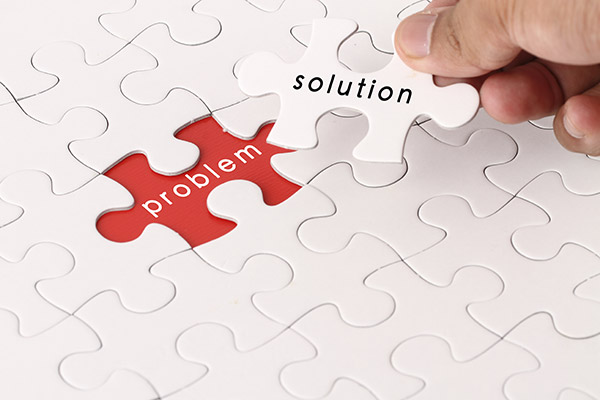
Sustainable Funding: The science behind it is you have to find that specific solution that’s going to do the job and meet the need for another person.
You can test things A and B. We do have a machine. If I put $10,000 at the top, 3% of that converts at the bottom as you capture it over time. Whereas on the nonprofit side, because it’s a linear path, you have a donor that is going to give you money and you are going to translate that to give the value to someone else. There is no loop that you can create where in earned revenue, someone will give me money. I give them value.
There is an immediate value added within that circle. I can take that surplus to provide a free value on the other side. Maybe there is some solution that I never got to it, but on the nonprofit side, you cannot get to the granular data that you can on the for-profit side. I could have ten conversations with ten different people, but you don’t have that value cycle.
That is part of what is brilliant about this. Part of the reason that I wanted to go into what it feels like when you are accountable for fundraising is, in part, because by adding this element, you can take some of that pressure off of your frontline people and that is going to enable them to be better, smarter and to listen better.
Individual fundraising is all about listening well. When you can do that without the pressure of “this meeting has to go well because A) We have to fulfill our mission. B) We have to pay people,” then everything is going to be smoother. That is part of what I love about what you have hit on, in terms of the importance of this as a revenue stream, especially for nonprofits, but for any organization. Am I correct in remembering that you are also launching a web portal connected to the book?
I’m putting together a training. The book, you could pick up and run with it. Knowing where I started as a fully nonprofit side. Stepping my toes into this world, there are so many questions that will come up so I have started putting together a course. It’s all off of a huge mural board that I have created that walks you through every step of the process, from idea, to considering whether you even want to do this or not, through getting very clear on your long-term vision and challenging you there. This is a world where you are going to have a societal vision, but you are also going to have a financial vision and how can you mirror those two. It’s massive.
Whenever you're facing a big change, what's valuable here is managing and communicating to those around you that are working with them through this change. Share on XThe whole reason I have created this at all is that I was launching my company and reaching out for resources. I would get connected to lots of amazing people whose ideas made it into the book. There is a nonprofit lens that was missing. The culture and reality when you are in that sector, the competing and philosophies that I have worked hard to try and take traditional business tactics that work, but include that nonprofit lens, so you are asking the questions that are on edge because of your unique scenario.
Do you know what the URL is going to be for this portal yet?
It will all be built off of SproutlySolutions.com. We have a sign-up there if you want to get on the list.
As we start thinking about wrapping up, if you had a magic wand and could have people pay attention to one thing, either something that we have been talking about or something else, what would it be and why?
The Change Cycle. If you look it up online, it will come up. It has red, blue, yellow and green sections. It has been a huge resource for me over time. Especially as you are stepping into the world of launching earned revenue, it all is in the world of change management. What I have seen the most valuable here is in managing and communicating with those around you who are working with you through this change.
I am someone who either has an idea and by the morning, my website is launched… or I’m faced with an obstacle and I pivot. I have learned that is not everyone. Or we work with people that are not them! Understanding The Change Cycle, it’s in the book, makes all the difference. I’m so grateful they were willing to share it with me so that I could put it in the book.
It walks you through six different stages of change that everyone goes through at any time they are confronted with a change. I joked that I use The Change Cycle when I tell my wife I want to mix up the furniture in the living room. I’m like, “Let’s change it.” What it has helped me understand is that when you have someone in the team that is more reserved towards the change that sometimes the change is inevitable or they say no. There are actual tools, tactics and information you can provide to them to help get them through each of the different stages.

Sustainable Funding: When you have someone in the team that is more reserved towards the change, there are actual tools, tactics and information you can provide to help get them through each of the different stages.
They might be in the sense of loss. They have lost their comfort around what they previously knew. I recommend it to anyone and everyone. It helped me immensely in my relationships with my colleagues because at first, I would be frustrated. We all “got to get on board!” It helped me because of the way my brain works, I’m like, “Now that I have a chart, everyone is going through the cycle. Sarah is on stage three. How can I get her to stage four?” Rather than seeing it as a, “No. Shut the door.”
My second time launching an earned revenue division I walked into a large nonprofit and there were people already on the chart that first day. Thankfully, I already knew of The Change Cycle. I walked in with that mindset path. Had I not had that, I would have walked in there and been like, “There is no way this is happening because people are not there yet.” I saw it as my role to comfortably walk people through the experience of the six stages to get us to a place where we could successfully build and launch what we intended to do.
What a wonderful resource because it feels like we are constantly managing change. The world we thought we would be in the past is not the world we thought we would be in. We are all managing ourselves, teams, families and communities through so much change and uncertainty. I love tools. I am not familiar with this Change Cycle and I am super excited to go and check that out.
If you go and check that out and you have comments that you want to share with us, put them in the comments on the website. I would love to hear your feedback and get your thoughts. This has been a delight, Jillian. Thank you so much for your time, wisdom, insights, passion and vision around whatever it is that we are up to, for-profit or nonprofit. We are all working on making the world a better place in our own way. For your contributions to that, from my heart to yours, thank you.
Thank you so much for the opportunity to share my experiences. Sitting down in 2021 and writing Purpose with Profit, it is coming from a place of I’m here to help. I wanted to package the years that I have had advisors throwing all types of information my way. I tried, tested, thrown a lot out, and want to make the experience of building a business for-profit or nonprofit that is purpose-driven. I want to share whatever I possibly can to help make your experience easier, less stressful, let you sleep easier at night. I have been there. I have cried many tears in the CEO seat. Please do not hesitate to reach out and even chat about what you are going through and see how I can best support you.
Remember, great leaders, make great teams. Until next time.
Important Links:
- J&J Consulting Group
- Purpose with Profit: Unlock Earned Revenue to Fuel Your Impact
- Jillian Domingue
- CareBOX Program
- The Change Cycle
- Purpose with Profit: Unlock Earned Revenue to Fuel Your Impact – Amazon
About Jillian Domingue
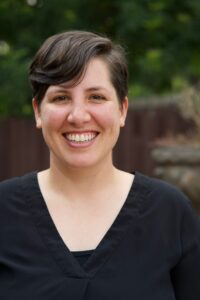 Jillian Domingue launched Sproutly Solutions to cultivate a community that is working to bring business development tactics to the nonprofit sector to generate sustainable revenue and increase our impact.
Jillian Domingue launched Sproutly Solutions to cultivate a community that is working to bring business development tactics to the nonprofit sector to generate sustainable revenue and increase our impact.
After over a decade in the nonprofit start-up trenches, her next decade is dedicated to helping nonprofit leaders unlock earned revenue to fuel their missions. Jillian offers consulting, training, speaking, and a published book called PURPOSE WITH PROFIT.
Jillian enjoys working with nonprofit leaders with big ideas who push the boundaries of what has been done before. Is that you? Let’s see what we can create together.
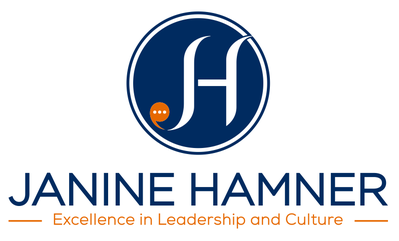
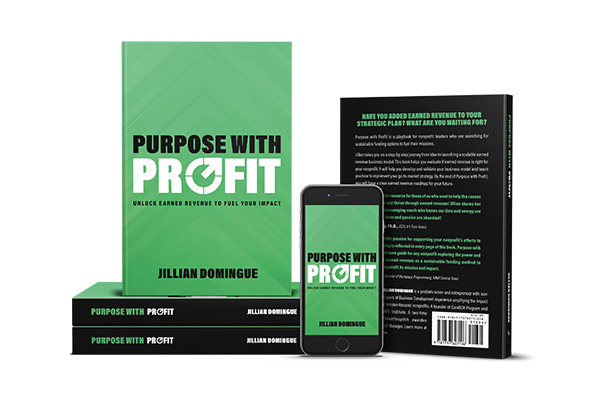




Israel Club
March 29, 2022 5:38 amMay I simply say what a relief to uncover somebody that really understands what theyre discussing over the internet. You certainly know how to bring a problem to light and make it important. More and more people really need to check this out and understand this side of the story. I was surprised that youre not more popular because you certainly have the gift.